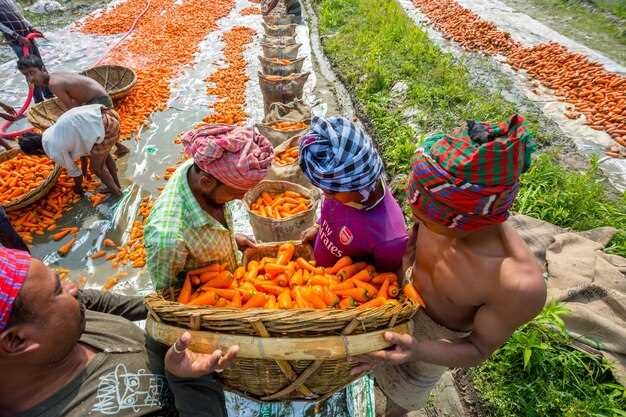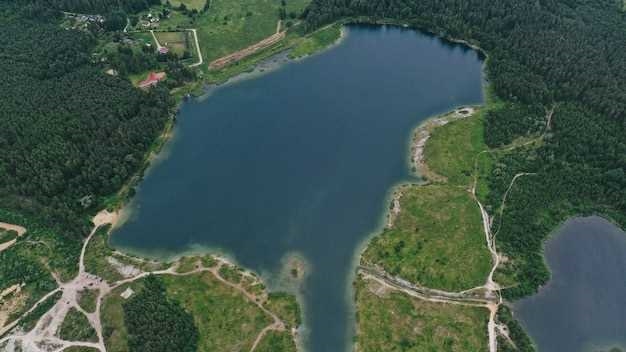
In the face of ever-increasing climate change impacts, Cambodian communities are finding themselves at the forefront of a battle against environmental adversity. The ability to adapt and build resilience has become paramount in ensuring the survival and well-being of these communities. This article explores innovative approaches and strategies that are being employed to tackle the challenges posed by climate change, while empowering Cambodian communities to thrive in the face of uncertainty.
Embracing Change: Navigating a Shifting Landscape
As the climate continues to evolve, Cambodian communities are confronted with a myriad of challenges, ranging from rising temperatures and extreme weather events to changing rainfall patterns and sea-level rise. These changes have far-reaching implications for the livelihoods and socio-economic stability of the communities, as well as the delicate ecosystems they depend on. In order to adapt and thrive in this changing landscape, it is crucial for these communities to develop innovative strategies that build resilience and foster sustainable development.
Harnessing Traditional Knowledge: Preserving the Past, Shaping the Future
One of the key pillars of building resilience in Cambodian communities lies in the recognition and preservation of traditional knowledge and practices. Indigenous communities have long possessed a deep understanding of their local ecosystems and have developed sustainable practices that have allowed them to thrive for generations. By integrating this traditional knowledge with modern scientific advancements, communities can develop adaptation strategies that are rooted in their cultural heritage while harnessing the power of innovation.
Understanding the Climate Change Challenges in Cambodia
In this section, we will explore the various environmental difficulties that Cambodia faces due to the changing climatic conditions. It is crucial to comprehend the unique challenges posed by climate change in order to develop effective strategies for adaptation and resilience building.
Environmental Vulnerability

Cambodia, like many other countries, is grappling with the consequences of climate change. The nation’s vulnerability to these changes is primarily influenced by its geographical location and socio-economic factors. Rising temperatures, erratic rainfall patterns, and increased frequency of extreme weather events are some of the key challenges that Cambodia encounters.
Impacts on Natural Resources and Agriculture
The changing climate poses significant threats to Cambodia’s natural resources and agricultural sector. The country heavily relies on its natural resources for livelihoods, food security, and economic growth. However, climate change-induced phenomena such as droughts, floods, and sea-level rise are jeopardizing these resources, leading to reduced agricultural productivity and increased vulnerability among rural communities.
Understanding the specific climate change challenges faced by Cambodia is essential for formulating targeted adaptation strategies. By addressing these challenges, we can work towards building resilience and ensuring the long-term sustainability of Cambodian communities in the face of climate change.
Assessing Vulnerabilities: Identifying the Most Affected Communities
In order to effectively address the challenges posed by climate change, it is crucial to assess the vulnerabilities of different communities and identify those that are most affected. By understanding the specific vulnerabilities faced by these communities, appropriate adaptation strategies can be developed to build their resilience and ensure their long-term sustainability.
One key aspect of assessing vulnerabilities is recognizing the unique characteristics and circumstances of each community. This involves considering factors such as geographical location, socio-economic conditions, and existing infrastructure. By examining these factors, it becomes possible to identify the communities that are most at risk and in need of targeted interventions.
Another important aspect of the assessment process is understanding the specific impacts of climate change on these communities. This includes studying the changes in temperature, precipitation patterns, and extreme weather events that are likely to occur in the region. By analyzing these impacts, it becomes possible to determine the extent to which different communities will be affected and the potential risks they will face.
Furthermore, assessing vulnerabilities also involves considering the capacity of communities to adapt to climate change. This includes evaluating their access to resources, knowledge, and technology that can support adaptation efforts. By understanding the existing adaptive capacity of different communities, it becomes possible to identify the gaps and develop strategies to enhance their resilience.
Overall, assessing vulnerabilities and identifying the most affected communities is a crucial step in building resilience and adapting to climate change. By understanding the unique challenges faced by different communities, targeted interventions can be developed to ensure their long-term sustainability and well-being.
Enhancing Adaptive Capacity: Strengthening Local Institutions and Governance
In order to effectively address the challenges posed by climate change, it is crucial to enhance the adaptive capacity of Cambodian communities. This can be achieved through the strengthening of local institutions and governance systems, which play a vital role in facilitating climate change adaptation strategies.
1. Empowering Local Institutions
Empowering local institutions is essential for building resilience in the face of climate change. By providing them with the necessary resources, knowledge, and authority, these institutions can effectively respond to the impacts of climate change and implement adaptation measures. This includes supporting community-based organizations, local government bodies, and traditional leadership structures.
2. Improving Governance Systems
Improving governance systems is crucial for enhancing adaptive capacity. This involves promoting transparency, accountability, and participation in decision-making processes related to climate change adaptation. Strengthening the legal and policy frameworks, as well as promoting multi-stakeholder collaborations, can help ensure effective implementation of adaptation strategies at the local level.
| Benefits of Strengthening Local Institutions and Governance |
|---|
| 1. Enhanced coordination and collaboration among stakeholders |
| 2. Increased access to resources and funding for adaptation initiatives |
| 3. Improved capacity for planning and implementing climate change adaptation measures |
| 4. Enhanced resilience and ability to cope with climate-related challenges |
In conclusion, enhancing adaptive capacity through the strengthening of local institutions and governance is crucial for building resilience in Cambodian communities in the face of climate change. Empowering local institutions and improving governance systems can lead to more effective and sustainable adaptation strategies, ultimately ensuring the long-term well-being and survival of these communities.
Implementing Nature-Based Solutions: Harnessing Ecosystem Services

In the pursuit of building resilience and adapting to the challenges posed by climate change, it is crucial to explore innovative strategies that capitalize on the inherent capabilities of nature. This section delves into the concept of implementing nature-based solutions and harnessing ecosystem services as a means to address the impacts of climate change on Cambodian communities.
By embracing nature-based solutions, communities can tap into the diverse range of services provided by ecosystems, such as water purification, flood regulation, and carbon sequestration. These services not only contribute to the overall well-being of the environment but also offer tangible benefits to human societies.
One key aspect of implementing nature-based solutions is the recognition and preservation of biodiversity. The rich and unique biodiversity found in Cambodian ecosystems plays a crucial role in maintaining ecological balance and resilience. By protecting and restoring biodiversity, communities can enhance their ability to withstand and recover from climate-related disturbances.
Furthermore, the integration of nature-based solutions into community planning and development processes can lead to multiple co-benefits. For instance, the restoration of mangrove forests not only provides coastal protection against storm surges but also creates opportunities for sustainable livelihoods through ecotourism and fisheries. This holistic approach ensures that adaptation strategies not only address immediate climate challenges but also contribute to long-term sustainable development.
Implementing nature-based solutions requires collaboration and engagement from various stakeholders, including local communities, government agencies, and non-governmental organizations. By fostering partnerships and promoting knowledge exchange, the implementation of nature-based solutions can be scaled up and replicated across different regions in Cambodia.
In conclusion, harnessing ecosystem services through the implementation of nature-based solutions offers a promising pathway for building resilience and adapting to climate change in Cambodian communities. By recognizing the value of nature and integrating it into adaptation strategies, communities can enhance their capacity to withstand and thrive in the face of a changing climate.
Empowering Communities: Promoting Climate-Smart Agriculture and Livelihoods
In this section, we explore the importance of empowering communities in Cambodia to promote climate-smart agriculture and sustainable livelihoods. By equipping local communities with the knowledge and resources necessary to adapt to the challenges posed by climate change, we can foster resilience and ensure the long-term well-being of these communities.
Enhancing Agricultural Practices
One key aspect of empowering communities is promoting climate-smart agricultural practices. By introducing innovative farming techniques and technologies, such as agroforestry and precision farming, communities can enhance their agricultural productivity while minimizing the negative impacts of climate change. These practices not only improve crop yields but also contribute to the conservation of natural resources and biodiversity.
Diversifying Livelihood Opportunities
Another crucial element of empowering communities is diversifying livelihood opportunities. By encouraging the development of alternative income-generating activities, such as eco-tourism or handicraft production, communities can reduce their dependence on climate-sensitive sectors and enhance their resilience to climate change. Additionally, promoting entrepreneurship and providing access to microfinance can empower individuals within these communities to create their own sustainable businesses and improve their economic well-being.
Overall, by empowering communities through the promotion of climate-smart agriculture and diversified livelihood opportunities, we can build resilience and ensure the long-term sustainability of Cambodian communities in the face of climate change.
Building Climate-Resilient Infrastructure: Ensuring Sustainable Development
In the pursuit of sustainable development, it is crucial to prioritize the construction of climate-resilient infrastructure. By integrating adaptive measures into the design and implementation of infrastructure projects, we can ensure the long-term viability and functionality of these essential systems in the face of climate challenges. This section explores the importance of building infrastructure that can withstand the impacts of climate change and contribute to the overall resilience of communities.
Enhancing the durability and flexibility of infrastructure: To achieve climate resilience, it is imperative to construct infrastructure that can withstand the changing climate conditions. This involves utilizing innovative engineering techniques and materials that are resistant to extreme weather events such as floods, storms, and heatwaves. Additionally, incorporating flexibility into the design allows for adjustments and adaptations as climate patterns evolve over time.
Integrating nature-based solutions: Nature-based solutions offer a sustainable approach to infrastructure development by harnessing the power of ecosystems. By incorporating green infrastructure elements such as wetlands, forests, and permeable surfaces, we can enhance the resilience of built infrastructure. These natural features provide multiple benefits, including flood mitigation, temperature regulation, and biodiversity conservation.
Investing in smart technologies: The integration of smart technologies in infrastructure systems can significantly contribute to climate resilience. By utilizing sensors, data analytics, and automation, we can monitor and manage infrastructure performance in real-time. This enables timely responses to climate-related risks, such as early warning systems for natural disasters, efficient energy management, and adaptive transportation systems.
Empowering local communities: Building climate-resilient infrastructure goes beyond physical construction; it also involves empowering local communities to actively participate in decision-making processes. Engaging community members in the planning, implementation, and maintenance of infrastructure projects ensures that their unique knowledge and needs are taken into account. This participatory approach fosters ownership and strengthens the resilience of both the infrastructure and the community it serves.
Ensuring long-term sustainability: Climate-resilient infrastructure must be designed with long-term sustainability in mind. This includes considering life-cycle costs, energy efficiency, and the use of renewable resources. By prioritizing sustainable practices, we can minimize the environmental impact of infrastructure development and contribute to the overall well-being of present and future generations.
In conclusion, building climate-resilient infrastructure is essential for ensuring sustainable development. By enhancing durability, integrating nature-based solutions, investing in smart technologies, empowering local communities, and prioritizing long-term sustainability, we can create infrastructure systems that are adaptable, efficient, and capable of withstanding the challenges posed by climate change.



